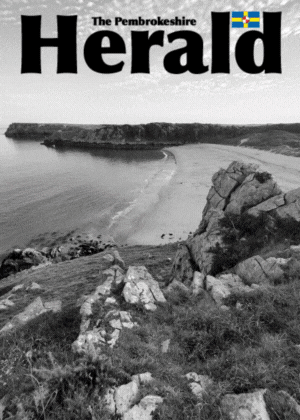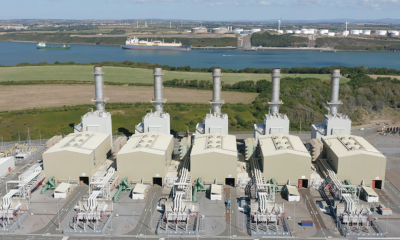News
Milford Haven tops list of UK’s most polluted ports
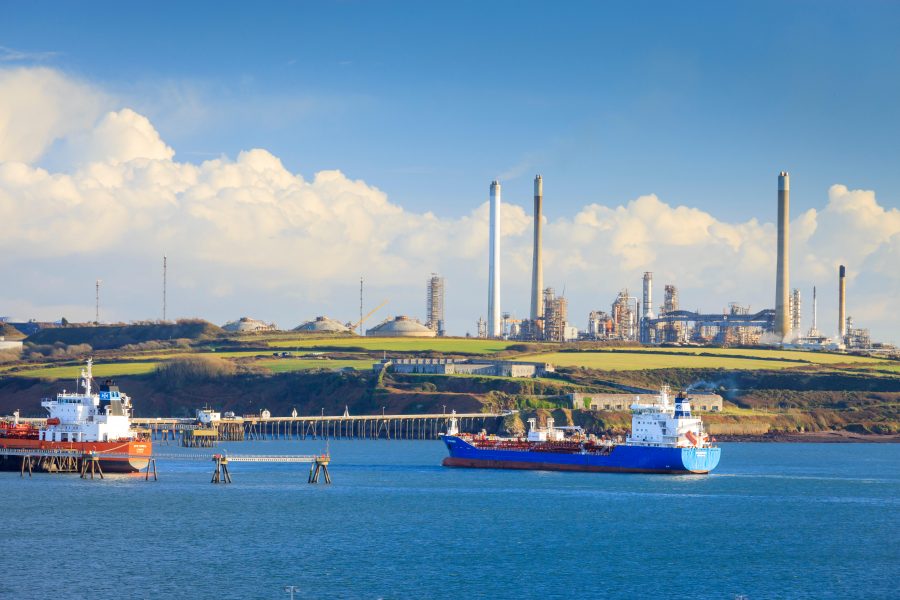
NEW analysis by Transport & Environment UK (T&E UK) has revealed alarming levels of air pollution from ships at UK ports, with Milford Haven, Southampton, and Immingham emerging as the top three for harmful sulphur oxides (SOx) emissions. The study highlights the urgent need for regulatory action to address the severe environmental and health impacts associated with shipping emissions.
The findings show that in 2022, just 472 ships visiting Milford Haven produced nearly 100 times more SOx emissions than all of Pembrokeshire’s 67,000 cars. This disparity is stark, given that Milford Haven had only half the ship traffic of Immingham, which ranked second, yet still managed to emit 50% more SOx. Southampton, ranking third, saw 46 cruise ships – representing a mere 6% of its total vessels – contributing more SOx than 200 container ships.
The top ten ports for SOx pollution, according to T&E UK, collectively saw 3,700 ships emitting 30 times more SOx than the one million cars registered in their respective local authority areas. This paints a troubling picture of the pollution burden borne by port communities.
In terms of nitrogen oxides (NOx), ships in the top ten polluted ports produced nearly 1.75 times as much NOx as the 970,000 cars registered in those areas. Southampton again topped this list, with its ships producing four times more NOx than all the city’s cars, half of which came from cruise ships. The scenario was similar for fine particulate matter (PM2.5), where Southampton also led, with ships producing half as much PM2.5 as a million cars, with cruise ships contributing significantly.
Ships not only release poisonous exhaust fumes but also discharge pollutant-laden wash water from exhaust gas cleaning systems, commonly known as “scrubbers.” This wash water, dumped directly into the sea, adversely affects marine life and exacerbates ocean pollution, a growing concern in the UK. Despite this, only a few UK ports prohibit such discharges.
T&E UK’s rankings were derived from an analysis of SOx, NOx, and PM2.5 emissions from commercial passenger and cargo ships docked at UK ports in 2022. The study included vessels mooring within a 1.5 nautical mile radius of a port’s main coordinates, with emissions compared to pollution from cars registered in the same local authority areas, based on data from the Department for Transport and Driver and Vehicle Licensing Agency.
T&E UK has called for the government to enact comprehensive policy and regulations to address air pollution and greenhouse gas emissions from UK shipping. The forthcoming refreshed Clean Maritime Plan is seen as a critical opportunity for action. Key recommendations include mandating zero-emission berths, implementing a shore-side electricity plan, charging ships for emissions while moored, and designating all UK territorial waters as Emission Control Areas. Additionally, a prohibition on scrubber wash water discharge is urged.
Jonathan Hood, UK Sustainable Shipping Manager at T&E, stated: “The awful levels of pollution revealed in this analysis demonstrate how the UK’s port cities are being choked by the harmful fumes caused by a shipping industry that, thanks to years of government inaction, has no impetus to change. The government has its last chance to chart a better course for the industry with the updated Clean Maritime Plan and it must not waste this opportunity. We need to see a rapid switch away from filthy fossil fuels, and ports must set binding targets to implement zero-emission technologies. These must include shore-side electricity, which would ensure ships can plug in at port and switch off their polluting engines.”
The Rt Hon. the Lord Deben, former Chairman of the UK Government’s Climate Change Committee, added: “It is disheartening to see the staggering levels of emissions from ships around UK ports, as revealed by T&E’s new analysis. There is an urgent need for stringent action from the government by prioritising stricter emissions control measures around UK territorial waters, increasing the use of shore-side electricity across ports, and prohibiting the discharge of dirty scrubber water into waterways. Without decisive action, the health impacts for residents and workers in port towns, not to mention economic costs, will continue to soar, leaving communities to suffer the dire consequences of inaction.”
The Port of Milford Haven said it was “working incredibly hard, inside our own business and with our customers, to reduce emissions and deliver an accelerated transition to a Net Zero future”.
A Port of Milford spokesperson said: “The Port of Milford Haven is the busiest energy port in the UK supporting Britain and Europe with vital energy and fuel. As custodians of the Milford Haven Waterway, our environment is very important to us. Sustainability is one of our core values and we are working incredibly hard, inside our own business and with our customers, to reduce emissions and deliver an accelerated transition to a Net Zero future.
“This year, the Port implemented a ‘Green Ship Incentive Program’ to provide discounted rates for ships that perform better in reducing air emissions. Milford Haven is one of the first UK ports – and the only one in Wales – to financially incentivise environmental improvements to ships.
“In addition, the Port is one of only a handful of UK ports to prohibit ships that use open loop scrubbers to clean exhaust emissions from discharging their wash water within the Milford Haven Waterway.
“The Port of Milford Haven supports the British Port Association’s rebuttal of the report produced by Transport and Energy (T&E) UK and question the methodology they have used to reach their conclusions. We are also disappointed they did not engage with us ahead of the report’s launch.
“The Port of Milford Haven has a pivotal role to play in delivering the UK’s Net Zero ambitions offering a whole energy cycle solution that will unlock accelerated transition while stimulating economic growth. Together with our customers, we are committed to a resilient, low carbon future and as a lead partner in the Milford Haven Energy Cluster we have documented a pathway to achieve this here: Milford Haven Waterway Future Energy Cluster – Delivering an accelerated transition to a Net Zero future – 2023 on Vimeo.”
The British Ports Association, which represents UK operators, said the report lacked critical context and industry research showed emissions from ports were a fraction of wider background emissions in most cities.
Mark Simmonds, the association’s policy director, said most of the industry had “ambitious” net-zero targets, which would have “a positive impact on air quality”.
Community
Public reminded to stay away from Ward’s Yard and Criterion Quay
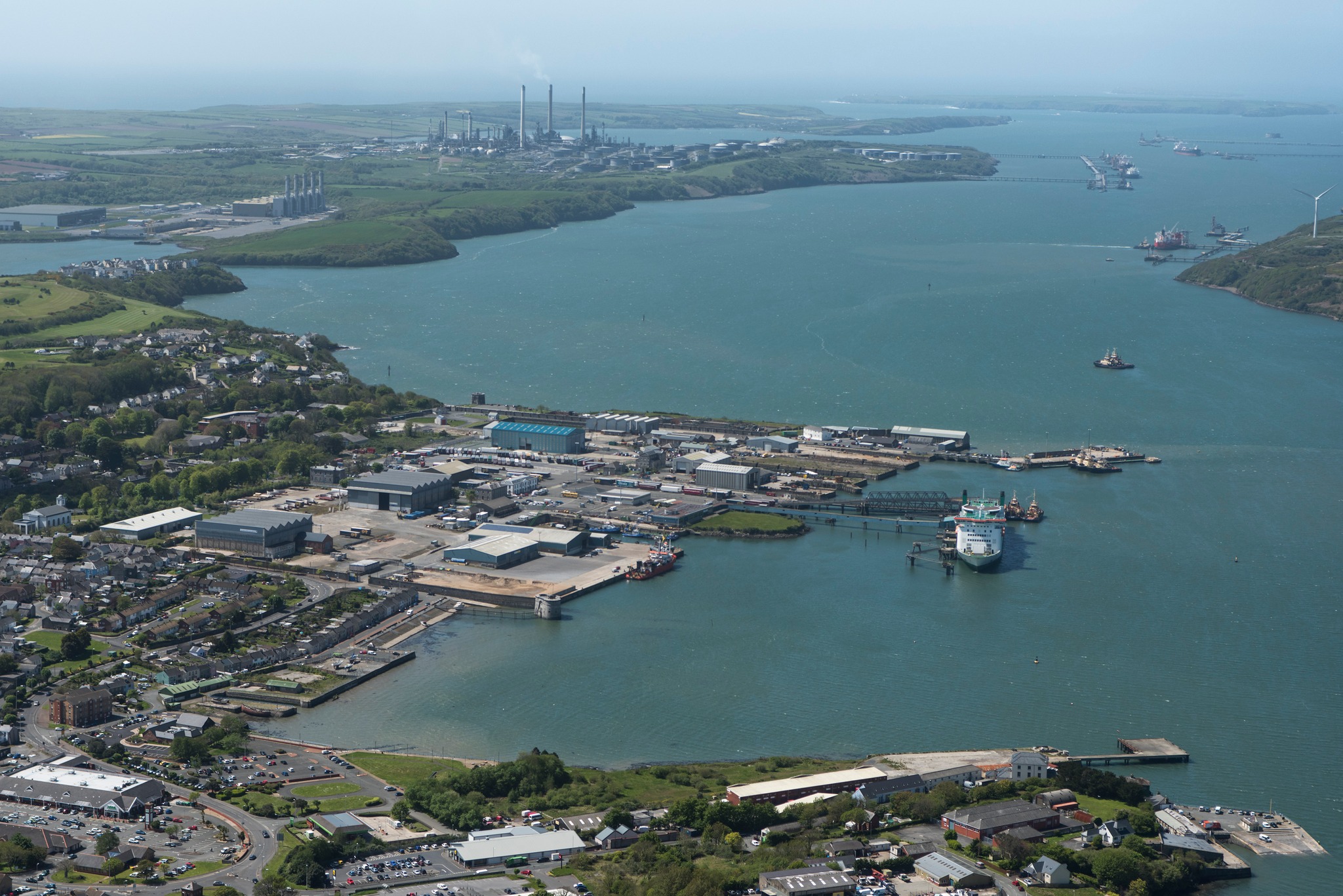
THE PORT of Milford Haven is reminding members of the public to stay away from Ward’s Yard in Milford Haven and Criterion Quay (sometimes known as the offshore jetty) in Pembroke Dock due to concerns over public safety.
Despite significant security measures, people continue to access the sites illegally, ignoring and sometimes damaging the onsite signage and fences.
Niall Yeomans, Head of Health, Safety and Security at the Port of Milford Haven said: “Safety is our key priority. Members of the public are continuously putting themselves and members of our team at risk of serious harm by trespassing in these areas.”
“Both Ward’s Yard and Criterion Quay are unsafe for public access. They are isolated areas next to deep water and are susceptible to slips, trips and falls.”
Both sites are owned by the Port of Milford Haven and are private property. Anyone found onsite without consent is trespassing, and any criminal damage could result in prosecution.
Anyone who sees any suspicious activity at Ward’s Yard or Criterion Quay is asked to contact Dyfed Powys Police on 101 urgently.
Crime
‘Sophisticated’ organised crime gang trafficked cocaine and cannabis to Aberystwyth

FIVE people have been found guilty or admitted to conspiring to supply cocaine and cannabis as Dyfed-Powys Police continues its efforts to dismantle organised crime gangs.
Officers seized cocaine with a street value of more than £400,000 from gang members, who continually changed tactics to avoid arrest.
Six defendants have appeared in court in the latest phase of Dyfed-Powys Police’s Operation Burleigh, which sought to disrupt the trafficking and onward supply of class A and B drugs into Aberystwyth, with all but one admitting their charges or being found guilty by a jury.
This brings the total number of people awaiting sentence under the operation to 15.
The court heard that officers from Dyfed-Powys Police’s Serious and Organised Crime Team and Ceredigion Priority Policing Team led the investigation into the OCG, which was described as ‘sophisticated, well-organised and evolving’.
Detective Sergeant Steven Jones said: “This conspiracy operated on a County Lines model, where controlled drugs are trafficked into a smaller rural town from a larger city, and the operation is controlled by one or more ‘drugs lines’.
“In this case there were a total of four lines controlling the supply of cocaine and cannabis within Aberystwyth.
“The conspirators frequently evolved their actions to frustrate the authorities and evade capture.”
The OCG embedded members were mainly asylum seekers brought to Aberystwyth by Toana Ahmad and another man who remains outstanding, with the sole purpose of dealing drugs. The drug lines were initially based in Swansea, and later in areas of Birmingham.
Three properties – on Terrace Road, Alexander Road and Parc Graig Glas – were identified early in the investigation as being used to house the OCG members embedded in Aberystwyth. Substantial amounts of cash, controlled drugs and weapons were recovered from these properties, and from the people found inside.
When arrests were made, the gang changed its tactics. Drugs began to be supplied from vehicles, and OCG members stayed in guest houses to avoid detection.
DS Jones added: “Trusted couriers were employed to transport drugs to Aberystwyth and cash back to Birmingham or Swansea. A number of vehicles, including taxis, were used as the gang attempted to avoid detection along the route, while trains were also taken when courier cars were stopped by officers.”
In June 2023, two vehicles travelling from the West Midlands towards Aberystwyth were stopped by police on consecutive days. A black sock was uncovered in the engine of the first car, which was found to contain 82g of high purity cocaine divided into 169 grip seal plastic bags.
Davinder Singh, who previously pleaded guilty to conspiracy to supply class A and class B drugs, was the driver of the second vehicle, which was a taxi. A blue plastic bag was seen falling out of his shorts, which contained over 81g of high purity cocaine divided into 167 grip seal bags.
DS Jones said: “On the basis that the amounts of cocaine transported over the 37 couriers over the course of the conspiracy period were similar, over 3kg of cocaine would have been conveyed to Aberystwyth from Birmingham.
“This equates to class A drugs with a potential street value of over £308,950. In addition to this, class A drugs were seized from individuals and addresses with a potential street value of £103,445, along with cash totalling £11,687.
“A number of teams and departments across Dyfed-Powys Police, from analysts, CCTV operators and priority policing teams, to CAB, the Technical Support Unit, Economic Crime Team and Force Intelligence Bureau all assisted in dismantling the OCG from top to bottom.
“Their dedication and relentless efforts have assisted in making Aberystwyth a safer place to live without the threat and harm of drugs being made easily available on the street.”
After a seven-week trial at Swansea Crown Court earlier this year, the following three defendants were found guilty for their parts in the conspiracy:
- Toana Ahmad, aged 33, of Lee Gardens in Smethwich, West Midlands
- Barzan Sarhan, aged 31, of no fixed address
- Ahmed Piro, aged 26, of no fixed address
The jury failed to reach a verdict on two defendants during the earlier trial. They have been subject to a retrial starting on July 1, with the following outcomes:
- Hawre Ahmed, aged 35, of Pinderfields Road, Wakefield, West Yorkshire, was found guilty by the jury of conspiracy to supply Class A and B controlled drugs.
- Diar Yousef Zeabari, aged 35, of Flat 5, 41 Bryn Road, Swansea, was found not guilty of conspiracy to supply Class A and B controlled drugs.
Karwan Karim, aged 39 of 125 Griffith John Street, Swansea, also stood trial, and pleaded guilty to conspiracy to supply Class A and B controlled drugs on day three.
In addition to the OCG members found guilty during the most recent trials, the following have previously pleaded guilty to charges of conspiracy to supply class A and class B drugs under Operation Burleigh:
- Davinder Singh, aged 36, of Huntingdon Road, West Bromwich
- Daban Khalil, aged 23, of Streetly Road, Birmingham
- Kastro Omar, aged 30, of Junction Road, Northampton
- Karwan Jabari, aged 26, of Weedon Close, Northampton
- Walid Younis Abdal, aged 34, of St Anne’s Road, Doncaster
- Saman Aziz, aged 41, of Kirk Road, Merseyside
- Adel Mustafa, aged 39, of Hubert Road, Newport
- Charlotte Roberts, aged 21, of Sutton Hill, Telford
The following have previously pleaded guilty to conspiracy to supply class A drugs:
- Akasha Smith, aged 24, of Third Avenue, Aberystwyth
- Luqman Jarjis, aged 21, of Wake Green Road, Birmingham
News
Community asked for views on allocation of new St Davids homes
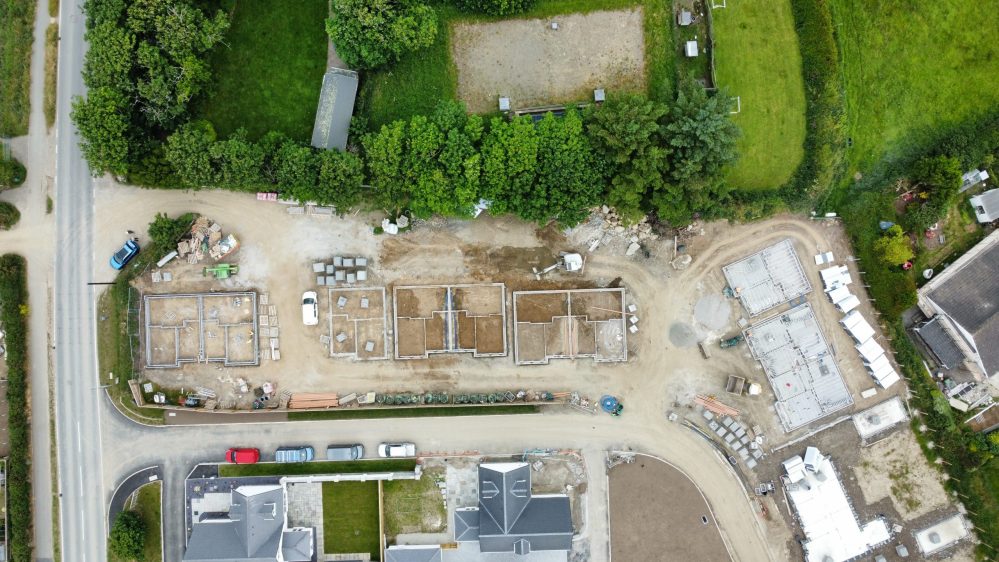
THE FIRST phase of Pembrokeshire County Council’s Glasfryn housing development in St Davids is progressing well with the second phase also underway.
The development being built by GRD Homes Ltd, began in November 2023, with a first phase completion date of Winter 2024 looking hopeful, ahead of the scheduled plans.
The first phase consists of seven properties, including a mixture of one and two bedroom bungalows
As completion draws closer the properties will be advertised via Pembrokeshire Choice Homes.
Ahead of this, the Council’s housing team will be holding community engagement on the 13th August 2024 at the Ty’r Pererin Centres, Quickwell Hill, St Davids, SA62 6PD, 5pm-7pm.
This will be a chance for officers to liaise with the local community about the allocation process for these properties.
Glasfryn’s second phase is well underway, with the initial groundwork already completed. This phase includes a further 11 two bedroom bungalows, with a completion date in late 2025.
These bungalows will meet the latest Welsh Government’s Development Quality Requirement, and will be energy efficient, built to EPC A specification and include solar panels to help tenants with running costs.
The Glasfryn development is funded in partnership with Welsh Government.
Cabinet Member for Housing Cllr Michelle Bateman said: “We are really keen to work with the community on a local lettings policy for these new properties, as we have done for our developments in other parts of the County.”
If you have any queries please email the Customer Liaison Team on [email protected], phone them on 01437 764551, or visit Housing’s Facebook page.
-

 Education5 days ago
Education5 days agoMilford Tesco worker achieves Oxford dream and lands top legal job
-

 Crime4 days ago
Crime4 days agoHaverfordwest man admits having nearly 1000 child and animal images
-

 Crime4 days ago
Crime4 days agoYouth set to appear in court over serious sexual offences
-

 Crime4 days ago
Crime4 days agoPolice investigating after man injured during altercation in cemetery
-

 Education4 days ago
Education4 days agoPupils delight in ice cream treat from Pembrokeshire’s number one van
-

 Crime4 days ago
Crime4 days agoTown centre ‘stinking of skunk’ as police strip cannabis farm
-
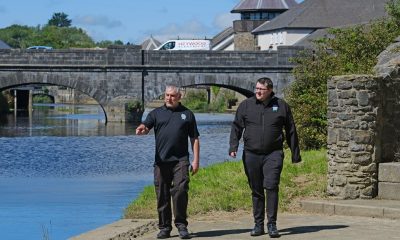
 Crime3 days ago
Crime3 days agoFag-butt police court summonses spark debate in Pembrokeshire
-

 News6 days ago
News6 days agoProposal to give firefighters a council tax discount to go to Cabinet






















